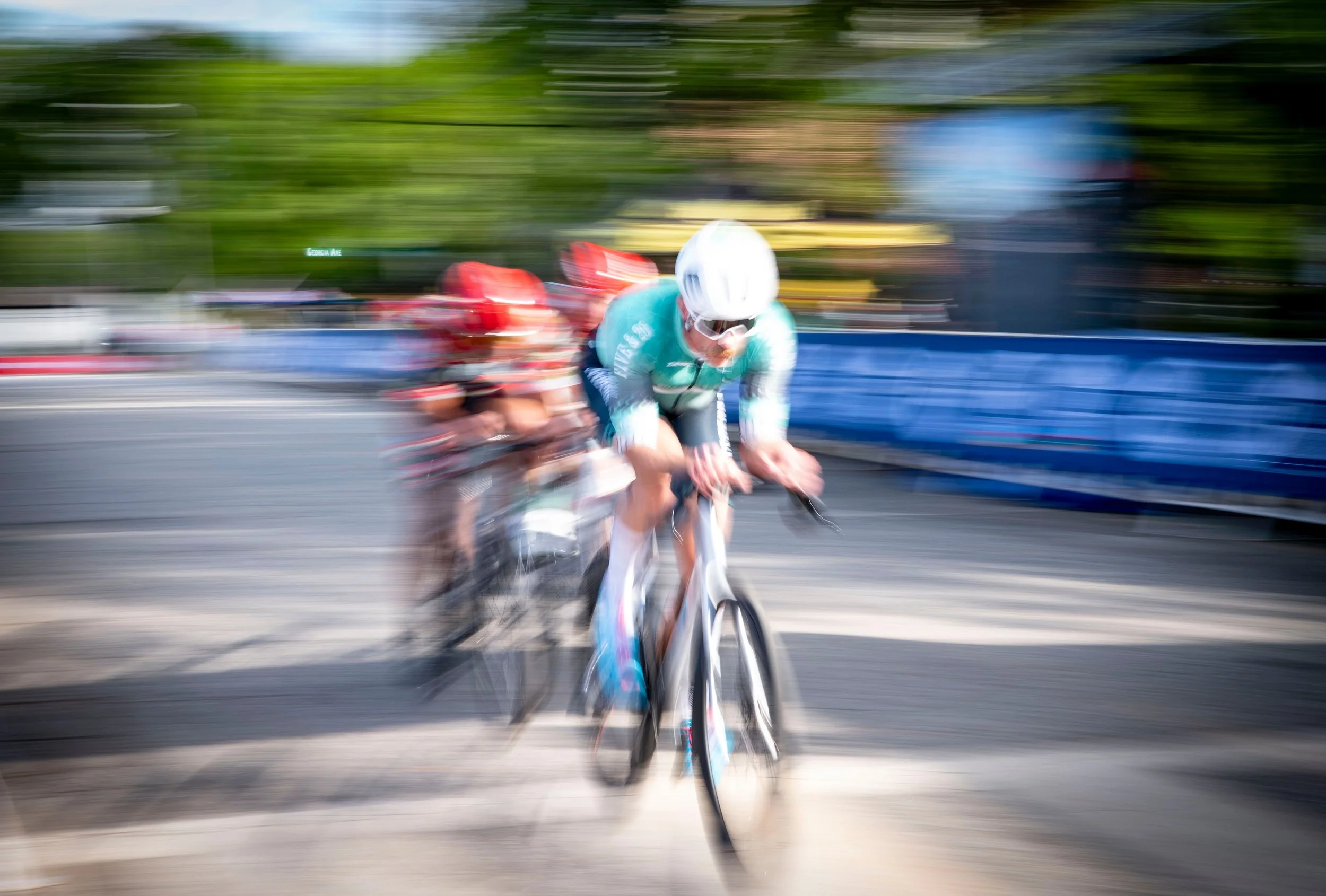Beyond the Watts: Smart Training Strategies for Competitive Cyclists
↓ The "Beat Your Number" VO2Max Protocol
↓ W/CdA vs. watts/kg: Rethinking Performance Metrics
↓ Strategic Race Selection: You Can't Peak for Everything
↓ Bonus Tip: Intensity Still Matters
↓ Finding Your Balance
↓ Winter Training For Cycling – Base Season
↓ Race Season and Interval Sessions
↓ Recovery
Cycling training methodologies continue to evolve as coaches and athletes search for the most effective approaches to performance improvement.
Let’s challenge some conventional strategies for cyclists looking to elevate their game.
The "Beat Your Number" VO2Max Protocol
The first tip centers around a highly effective VO2max interval that is an absolute banger. Unlike traditional 5x5 minute intervals or 30/30 protocols, this approach focuses on maintaining power above a specific target number for as long as possible.
Here's how to execute it:
Find your target number: Use your PVO2 max from WKO software, or add approximately 15-30 watts to your best 5-minute power from the last 90 days. This typically equates to about 125% of your threshold power. This is your TARGET NUMBER to stay above. Let’s say your best 5min power is 370W…your target for this interval workout is now about 385-400W.
Execute with intensity: Start about 35-40 watts above your target (e.g., if your target is 385 watts, begin at around 425 watts) for the first 30 seconds, then settle into a rhythm.
Fight for your number: As fatigue sets in, your power will gradually decrease. When it begins to drop, get out of the saddle to bring it back up. Continue this battle until you can no longer maintain your target power.
Recover and repeat: Take approximately 10 minutes of recovery between intervals, spinning easily in Zone 1-2. Continue performing intervals until you can only maintain your target power for about 2 minutes.
What makes this protocol particularly effective is that it generates high-quality VO2max training—maximizing your time at 100% of your VO2 capacity rather than hovering around 85-95%.
While the gold standard for effectiveness is 90% VO2Max from studies showing physiological changes, this adds some extra workload for those of us racing and hitting really hard group rides. To be clear: this workout is not about just chasing the best theoretical adaptations that have previously been found in a lab—this is for the real world athlete.
The approach is also psychologically motivating since you're chasing a specific number rather than just trying to complete prescribed intervals.
For optimal results, perform this workout when you're relatively fresh, not following a hard training day, and ensure you've consumed adequate carbohydrates the night before and morning of the session.
>>>If you want more traditional VO2Max Workouts, check out these options<<<
W/CdA vs. watts/kg: Rethinking Performance Metrics
The obsession about w/kg. I get it; it matters. But sometimes we hyperfocus on one thing, leaving other stone’s unturned.
For most North American racing scenarios - even stage races like Tour of the Gila - watts per CdA (aerodynamic drag) is significantly more important.
Even if you're doing Gila right now, watts per CdA and getting aero is most likely more important to you than watts per kg.
This perspective shift is particularly relevant for criterium racers who may be unnecessarily focused on their weight-to-power ratio when aerodynamic efficiency would yield greater performance benefits. The one-off efforts reflected in W/kg charts rarely translate directly to race performance, which depends on numerous other factors.
The key takeaway: Balance your "aero game" with your "weight game," especially if you're primarily racing on flat or rolling terrain. Improvements in aerodynamic positioning and equipment may offer more significant performance gains than dropping another kilogram.
Strategic Race Selection: You Can't Peak for Everything
It’s easy to fall into the trap of wanting to be fresh and at 100% for every race, however this often leaves us at 93% (made up number) or something less, because we taper off volume and training sessions in order to get “race ready” for the coming weekend.
This is mostly an issue for the most serious racers, as you race very often!
This approach, while tempting, compromises long-term development by reducing overall training volume and limiting harder training sessions.
For example, if your local criterium is on Saturday and you're constantly tapering with reduced Thursday training, an easy endurance ride on Wednesday, and openers on Friday, you're sacrificing valuable training stress that would contribute to your development as an athlete.
Additionally, if you only warm up, race for 30-40 minutes, and don't ride afterward, your weekly volume takes a significant hit.
With one last crit of the race block on deck right now, the Kanberra guys have elected to ride 2.5H before the race, to allow 3.5H to be accumulated on Saturday, and then the long ride as a team on Sunday.
Think this through:
Train normally through most races, maintaining your normal weekly structure, with just a slight reduction in load on Thursday and Friday.
Skip "openers" workouts for less important events
Save complete tapers for truly significant races
Continue with your scheduled Sunday long ride after Saturday races
If you're tapering all the time, it's holding you back for down the road.
>>>I made a $29 General Race Prep for 8 weeks to help you out! Lmk how it goes<<<
Bonus Tip: Intensity Still Matters
If you never feel like you need a rest week, you're probably not training hard enough.
In an era dominated by discussion of Zone 2 training and emphasis on volume, I’d caution against neglecting intensity. There is a fundamental importance of aerobic development and volume, but high-intensity sessions are the "jet fuel" that elevates performance.
I have national champions that start setting PRs three to four months into training, and that’s not a humble brag of coaching, but emphasizes how properly structured intense workouts can transform performance numbers, even for accomplished athletes.
No, we aren’t just chasing power bests, of course not! Seeing how certain intervals can peel back the onion a bit more, increasing power at similar RPE, is such an awesome part of proper training!
Beyond physiological adaptations, intense training provides psychological preparation for racing: When you're in those 'holy crap' moments in the bike race, you know you've been in those in training.
Cry in the dojo, laugh on the battlefield.
Finding Your Balance
Balance between aerodynamic efficiency and power-to-weight ratio.
Balance between race performance and long-term development.
Balance between high-intensity and endurance training.
Think critically about your training approaches and race preparation strategies. It doesn’t take long.
You can avoid common pitfalls, optimize your training time, and achieve more sustainable performance improvements.
Whether you're a criterium specialist or an all-around road racer, these principles can help guide your training decisions and race planning for more effective long-term development.
The key is to approach your cycling with a thought out plan and strategy rather than simply following “the best new workout” that may not apply to your specific goals and racing context.
Til Next Time!!
Best of luck with your training and racing.
Brendan

